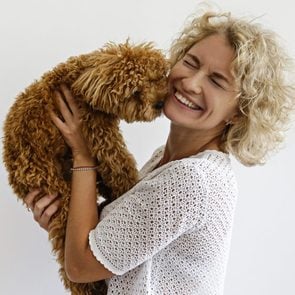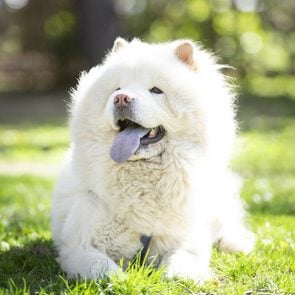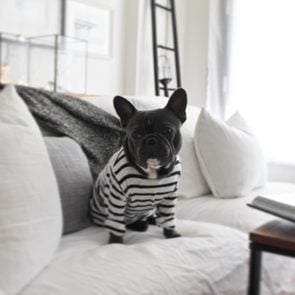20 Adorable Dogs with Pointy Ears You Need to See
Updated: Apr. 23, 2024
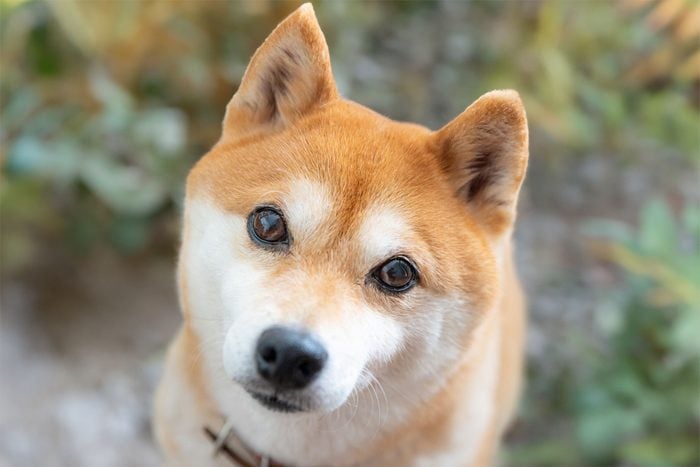
There’s no doubt about it: Dogs with pointy ears are absolutely ear-isistible! But those expressive ears also have a purpose, according to experts.
Who can resist a dog with pointy ears? In addition to the lovable traits that every dog possesses—sweet eyes, boop-able noses and waggy tails—pointy-eared pups have an extra way of communicating with you. Ever notice how your dog’s ears perk up when she’s excited? That’s even more pronounced (and adorable) in dogs with pointy ears. So it shouldn’t come as a big surprise that these dogs rank among the most popular dog breeds in the world.
But those ears exist for reasons beyond providing optimal cuteness. “Everything that happened in dogs is because humans decided what we wanted,” says Elaine Ostrander, PhD, founder of the Dog Genome Project. “Humans said, ‘Hey, I need a dog that’s a good hunter or a good herder,’ so we bred them to have certain attributes. Different ear shapes or sizes are believed to help dogs with specific occupations.”
Some dogs with pointy ears originated in colder climates where having relatively short ears meant they were less likely to be afflicted by frostbite, says Jerry Klein, DVM, chief veterinarian with the American Kennel Club (AKC). Others came from tropical areas, where their big pointy ears helped them cool off in the heat. And still other breeds may have developed short pointy ears for defensive reasons—so their ears weren’t easy to grab ahold of and bite.
Reader’s Digest talked to four dog experts, including a canine geneticist and veterinarian, about some of the most distinctive pups with pointy ears. Ahead, you’ll learn more about these dogs and their attributes, as well as how they likely ended up with these types of ears.
Get Reader’s Digest’s Read Up newsletter for more pets, cleaning, humor, travel, tech and fun facts all week long.
About the experts
|
1. Chihuahua
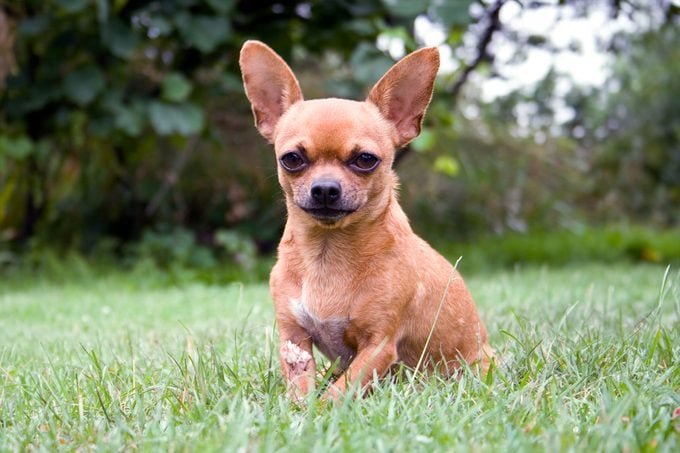
Chihuahuas might be one of the smallest dog breeds, but they’ve got big-dog attitude. Their ears—which tend to stick up and out—are one of their cutest features and likely didn’t happen by accident. “With a lot of the little guys who are primarily companion breeds, it comes down to what owners like the look of,” says Dayna Dreger, PhD, a senior staff scientist at the National Human Genome Research Institute and NHGRI’s Dog Genome Project. “Those ears can be really expressive, and Chihuahuas can pull them back and stand them up—and it’s adorable. So they were bred that way.” Fun fact: Chihuahuas, like all dogs, are born with floppy ears, and their ears become pointier as they grow.
2. Shiba Inu
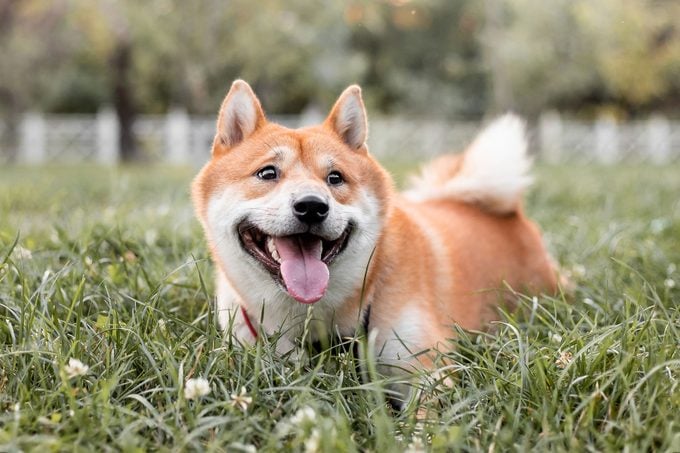
An ancient Japanese dog breed, Shiba Inus are prized for their loyalty and intelligence—as well as their curly tails and adorable fox-like ears. And while their hunting credentials are a little unclear—”the Shiba [may] have been used for hunting in ancient times,” says Dreger, “but that has not been a trait that is continued or selected on today”—they are known for having a strong prey instinct. That means you’ll want to keep them away from cats and other small animals unless raised with them. Shibas love vigorous workouts and play with their humans, but be forewarned: Those perky ears won’t necessarily translate into having your Shiba listen to your commands. The breed is notoriously independent.
3. Siberian husky
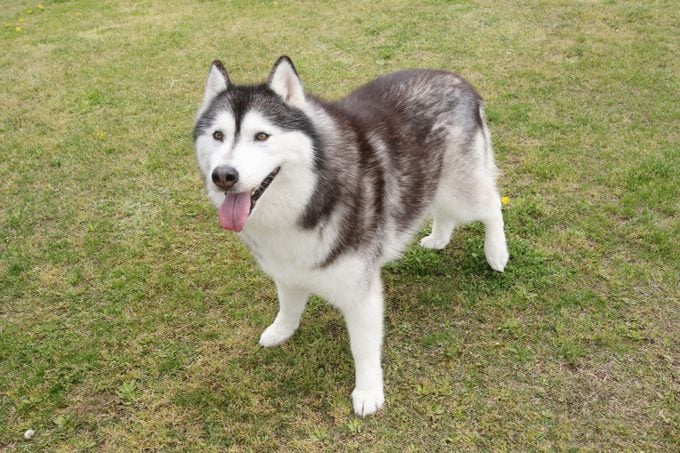
Siberian huskies wear their hearts on their ears. These expressive pups are known for their their loyal and outgoing personalities, as well as their adorable wolf-like appearances. Part of the spitz group of dogs (spitz means pointed in German), they boast thickly furred triangular ears that give them protection against the cold. “They would be less likely to develop frostbite in the frigid weather where these dogs were initially bred to work,” says Dr. Klein. Originally used as speedy sled dogs, they love vigorous exercise and romps in the snow.
4. Pomeranian
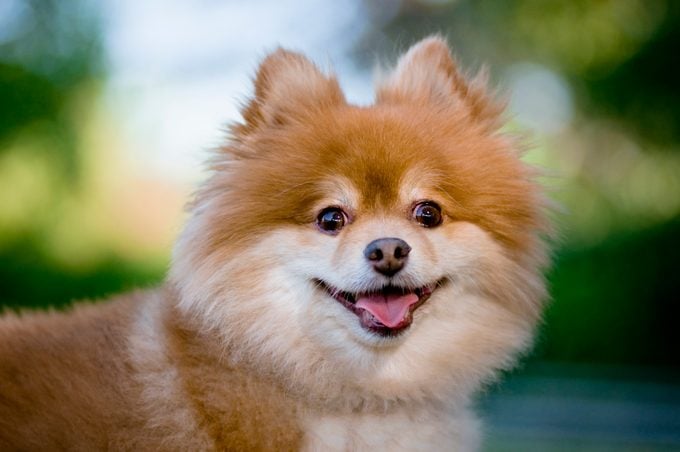
Two things come to mind when you think of Pomeranians: pointy ears and fluffy white tails. So it might surprise you to know that these lovable lapdogs are descended from the powerful sled dogs of northern Europe. “They’re spitz breeds,” says Dreger, “characterized by their small pointy ears, dense coats and curled tails.” Poms were bred down in size over the centuries and owe much of their popularity to Britain’s Queen Victoria, who became a serious breeder of Pomeranians during the late 1800s.
With their smiling faces, double-thick coats (usually in dramatic shades of orange and red) and eager-to-learn personalities, Poms make excellent family pets. “Poms are inquisitive and can master tricks and games easily,” says Brandi Munden, vice president of communications for the American Kennel Club. Translation: You’ll have a whole lot of fun with them!
5. Yorkshire terrier
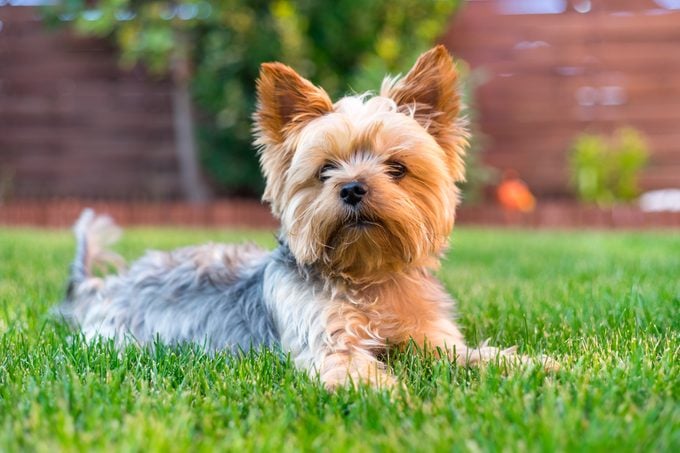
Yorkshire terriers are the epitome of “purse dogs,” known for their small size, glossy coats and spunky personalities. But back in the 19th century, they were serious working dogs, used to hunt rats in mines and mills—where their small pointy ears would have been an asset since they couldn’t be easily grabbed or bloodied, says Dreger.
So how did Yorkies work their way up the social ladder? “Many of the small terriers became popular as companions due to their fun and active personalities, small size and easy-to-keep coat,” says Dreger. If you’re thinking of bringing home a Yorkie, know that they can be as tenacious as they are affectionate. And while Yorkies don’t need lots of room for exercise, they do crave lots of attention.
6. Chow chow
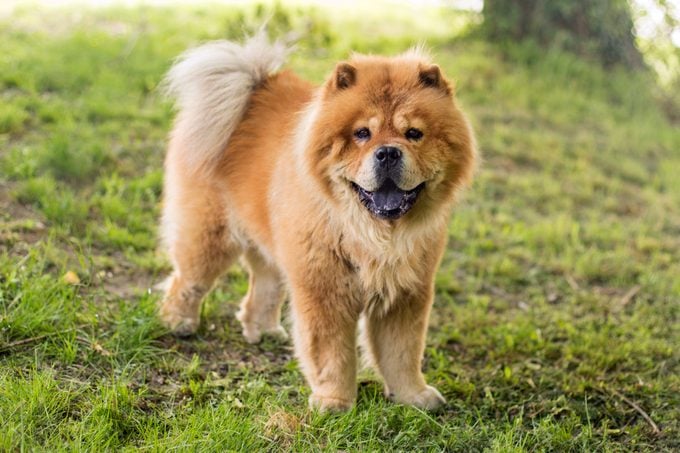
A serious-minded breed from ancient China, chow chows have a fascinating history as hunting dogs and companions to Chinese nobles. But they’re probably best known as one of the dog breeds that look like lions—with a lion’s mane ruff around their head and shoulders, plus a blue-black tongue. Like the Shiba Inu and the Akita, Chows are one of the Asian spitz breeds, says Dreger. And while their pointy-but-fluffy ears give them something of a teddy-bear-like appearance, don’t be fooled into thinking they are pushovers: Chows have a reputation for being stubborn and a bit aloof.
7. Boston terrier
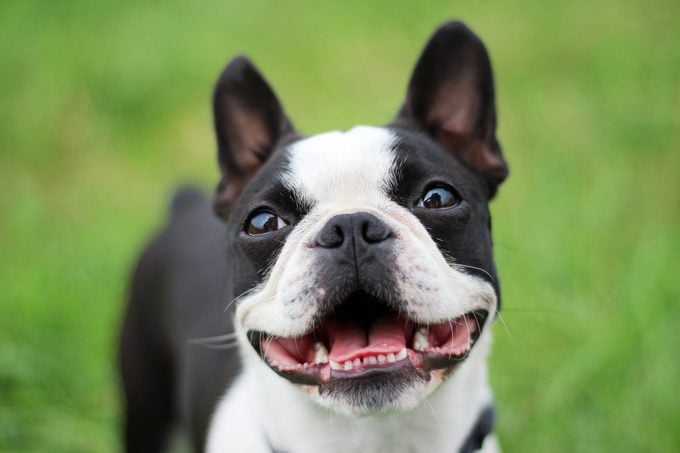
With their tuxedo coats and impeccable manners, Boston terriers have earned the nickname “the American Gentleman.” But their roots are a little grittier: Boston terriers trace their ancestry to the dogfighting craze in 1860s England, when a Liverpool breeder crossed a bulldog with a white English terrier in the hopes of creating a new breed of fighter. That pup, a stocky male named Judge, was sold to an American who brought him home to Boston, where he soon left his fighting days behind him.
“Boston terriers’ fun and quirky personalities made them popular pets,” says Dreger. And over the years, they were bred to be the smaller, sweet-natured companion dogs we know today. Now these happy guys are consistently one of the top 25 most popular dog breeds in America, according to the AKC.
8. Corgi
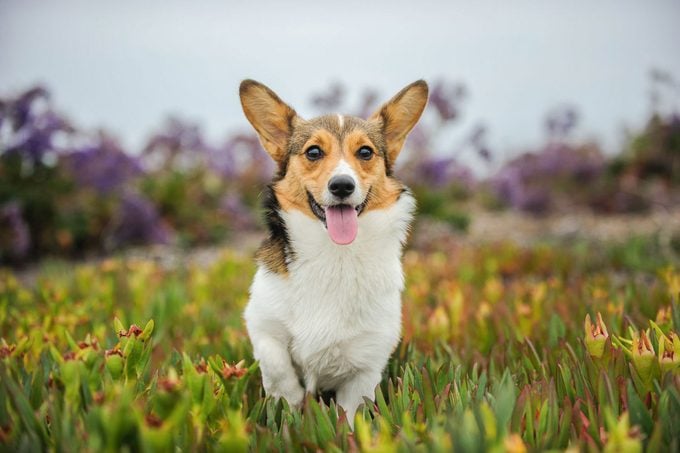
The corgi—aka everyone’s favorite short-legged pup—is one of the most recognizable dogs with pointy ears. (The breed’s up-and-out-there ears are sometimes likened to those of Yoda from Star Wars.) Originally bred to herd livestock—“they were used by the shepherd to move and manage sheep, goats and cattle,” says Dreger—corgis quickly charmed humans with their smarts and sweet personalities and moved themselves up in the world, becoming popular pets to kings, queens and other members of the nobility. Queen Elizabeth II famously adored the breed, owning more than 30 of them during her lifetime.
If you’re considering adopting one yourself, remember that all those years of herding livestock filled them with energy to burn. Corgis need regular exercise to blow off steam.
9. German shepherd
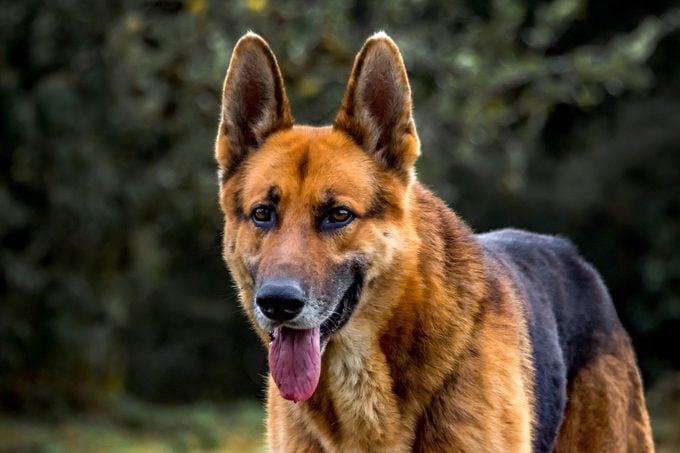
These large work dogs can stand as tall as 26 inches and weigh up to 90 pounds. Originally bred as herding dogs, they are highly intelligent, loyal and confident, making them excellent recruits to work as guard dogs or with police and military units around the world. Their stand-up pointy ears serve a dual purpose: They give them impeccable hearing, but they’re also compact enough to stay out of the way when this dog is taking down a threat. “They’re less vulnerable to injury if they can’t be grabbed,” says Ostrander.
10. Alaskan malamute
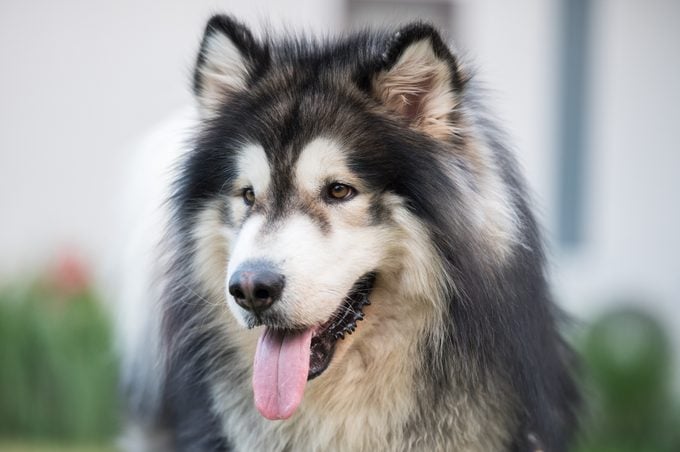
Did someone say wolf? The cold-weather-loving Alaskan malamute has been used to pull sleds for centuries. Experts believe these dogs are descendants of the domesticated wolves that accompanied Paleolithic hunters across the land bridges of the Bering Strait into North America around 4,000 years ago. Their ears are slightly rounded at the tips and small in relation to the breed’s sturdy stature.
“The Alaskan malamute is an immensely strong, heavy-duty worker,” says Munden. “But they’re also loyal and playful.” As pets, malamutes are known for being affectionate and gentle, but they do need training. Adult malamutes can weigh 75 to 85 pounds, so you’ll want to make sure yours knows that the leader of his pack is you.
11. Akita
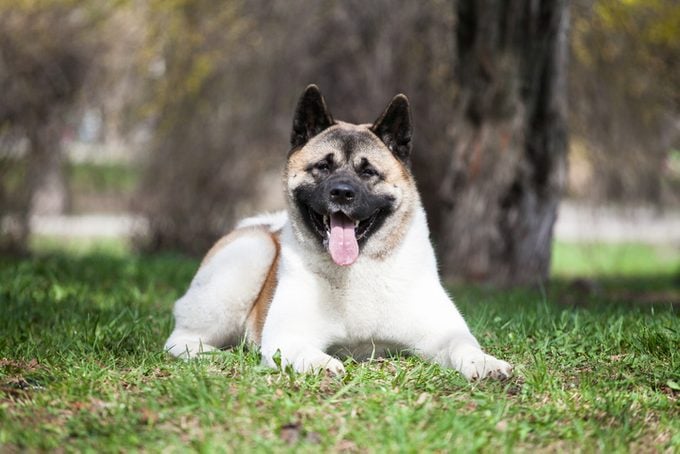
Originally bred to hunt in packs for big game such as wild boars, bears and deer, the Akita is another one of the Asian spitz breeds, says Dreger. In their home country of Japan, Akitas are regarded as symbols of good health, happiness and long life, but the breed itself almost didn’t make it. During World War II, the Akita population was devastated as the dogs were killed for their fur or starved due to lack of food. Thankfully, dedicated breeders brought Akitas back after the war, sometimes cross-breeding them with German shepherds to give them the bigger, more bear-like appearance we see in today’s dogs.
Akitas are known as loyal and affectionate pets, but they are also powerful (an adult male can weigh 130 pounds), strong-willed and independent. If you’re planning to bring one home, training is a must.
12. Basenji
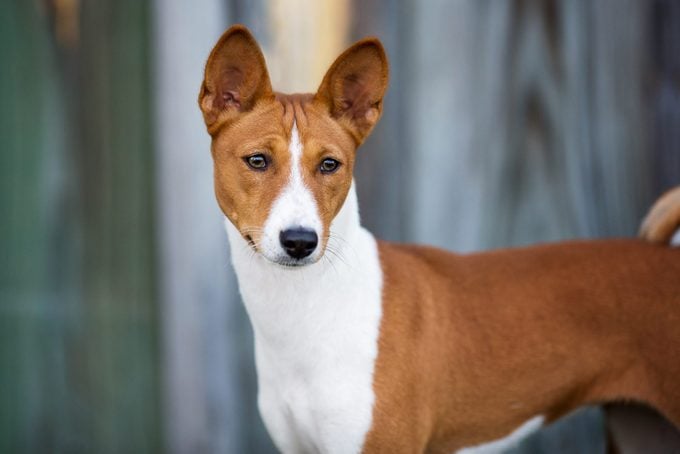
Basenjis are recognizable by their expressive eyes and big pointy ears. But those ears likely do more than just help them hear well. “For a breed like the basenji, it’s going to be more about body-temperature regulation,” says Dreger. “An area like the ear, where they have very thin skin and not a lot of hair—that’s where you get heat transfer. If they’re overheating, they can traffic the blood closer to the surface of the skin so it can interact with the air and lower their body temperature.”
And here’s another interesting dog fact: Basenjis are considered a primitive breed, and they can still be found living with tribal villages in central Africa.
13. Bull terrier
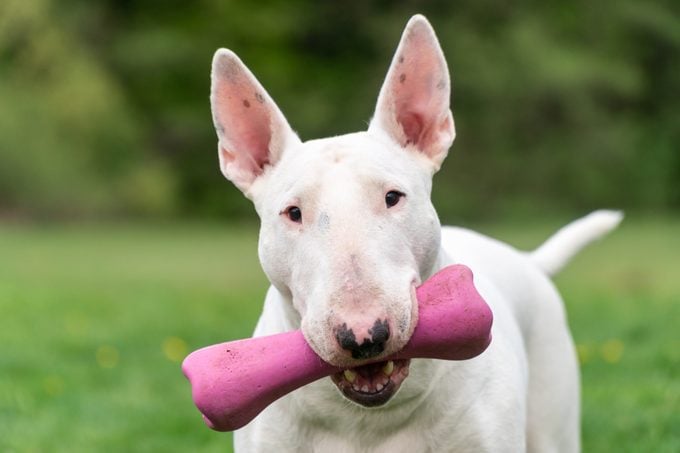
A sturdy breed with sturdy ears to match, the bull terrier is a cross between a bulldog and a terrier—with a little Dalmatian thrown in to produce that white coat. These dogs were originally bred for bull baiting, a gruesome blood sport in England in the 17th through 19th centuries in which dogs were set loose on a tethered bull as onlookers bet on the outcome. However, once blood sports were banned, bull terriers quickly became sought-after companion animals, especially among young British gentleman in the 1800s. “Their fun personalities made them popular,” says Dreger.
14. Papillon
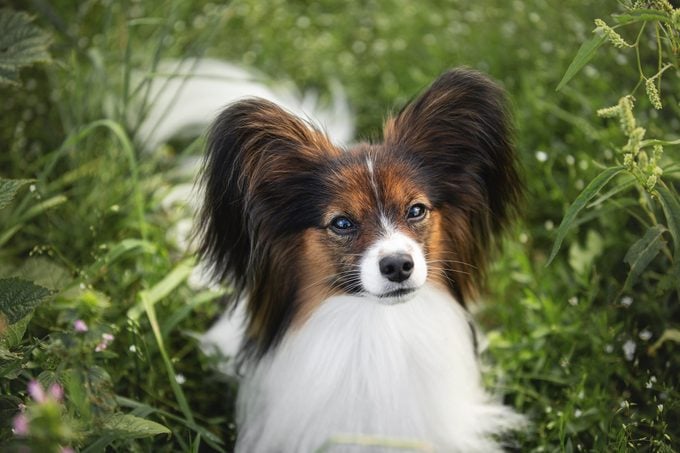
A papillon’s ears are both pointy and furry, which lands them a top spot on our list of the cutest dogs with pointy ears. “Papillons have ears that resemble the wings of a butterfly,” says Dr. Klein. “The word papillon means butterfly in French.” These posh pups weigh in at about 5 to 10 pounds and are known for their upbeat, friendly and athletic natures, as well as for being one of the most intelligent dog breeds. They were originally bred as companions for noblewomen and have been included in paintings by Rembrandt, Goya and Toulouse-Lautrec.
15. Rat terrier
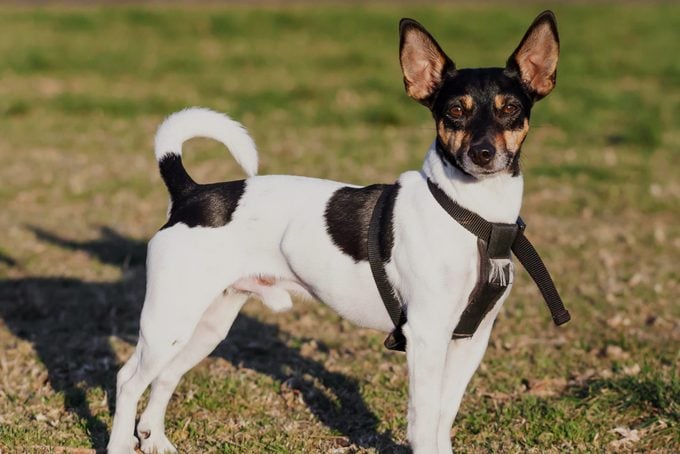
Known for their boundless curiosity and energy, rat terriers might be small (they average 10 to 25 pounds), but they have big personalities. “They are fun and active but also independent and not overly needy,” says Dreger, “so they make great family pets.”
The breed takes its name from its original job description: killing rats on boats and farms. And while their working days are long behind them, they do still have a taste for the chase. “Many terrier breeds will still happily go after small critters,” notes Dreger, “so caution should be taken when keeping them with other household pets or backyard wildlife.”
16. Samoyed
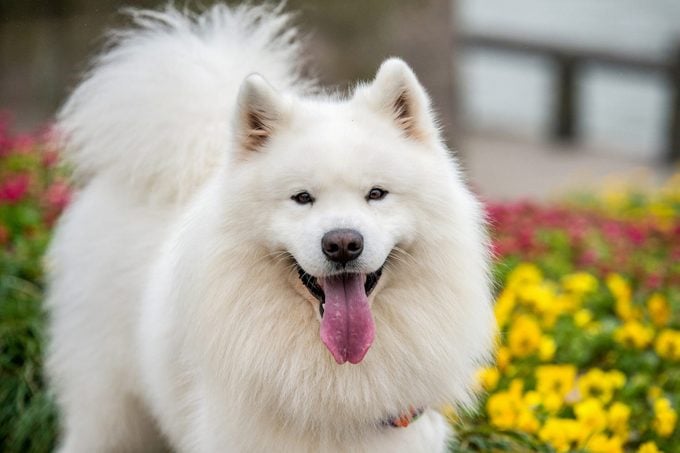
Obsessed with big, fluffy dogs? You’ll love the Samoyed. These gentle dogs that look like bears stand anywhere from 19 to 23 inches and have an easygoing, graceful gait. “Sammies are powerful and tireless, and they have a thick coat that’s impervious to the cold,” says Munden. The dogs also have thick, triangular ears, and lips that curl upward, giving them what looks like a perpetual smile. But that cute expression also serves a purpose: It stops them from drooling, which prevents these Siberian-bred dogs from developing icicles on their faces.
17. West Highland white terrier
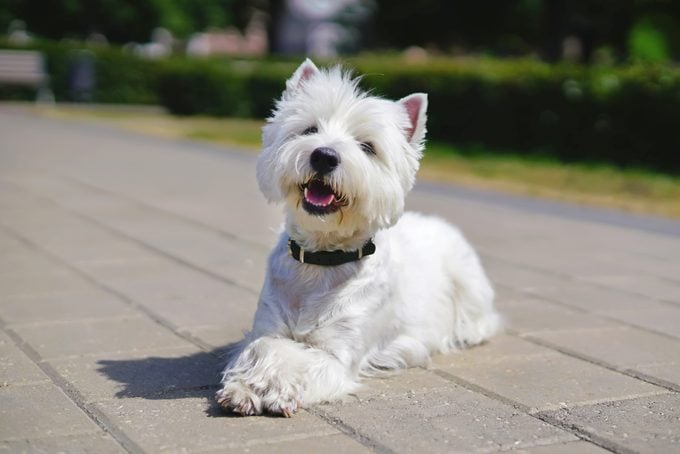
These charming white pups have velvety-soft ears and happy personalities. Initially bred in the hills of Scotland, the Westie’s primary job was to find and scatter rats away from farmland and chase foxes out of their holes. “So it was helpful to have small ears that were out of the way,” says Dreger. Today, these dogs will chase anything that moves, which means you’ll want to provide them with a fenced-in yard and lots of toys to play with.
18. Belgian Malinois
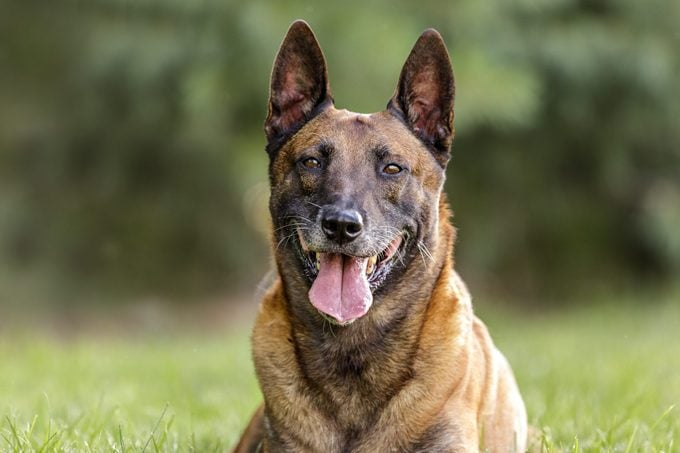
The Belgian Malinois is a guardian breed, and it takes its work seriously. Descended from livestock-herding dogs, Mals are now often employed by law-enforcement agencies and the military. “They’re commonly used for the detection and apprehension of bad guys, or as a deterrent for security purposes,” says Dreger. These dogs are known for being smart and eager workers who love their humans. Just be aware that since they love to think and move, you’ll need to give them regular vigorous workouts and training to keep them happy.
19. Australian cattle dog
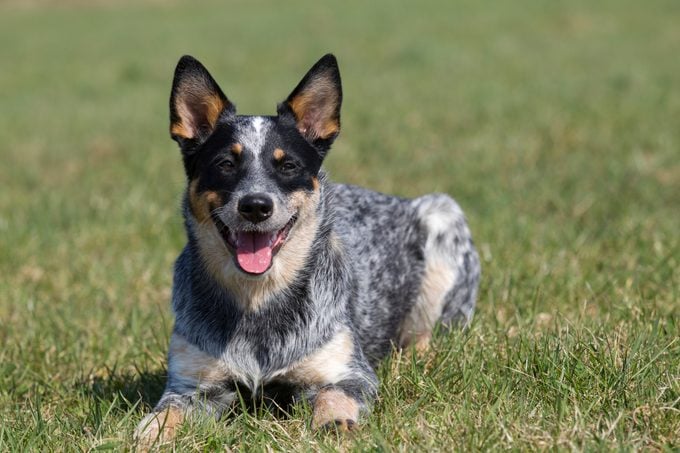
The Australian cattle dog (ACD) got its start as a herding dog, nipping the heels of Australian cows as it pushed them through the fields. “They were used by the shepherd to move and manage livestock,” says Dreger. It’s why they are sometimes called “heelers.”
These dogs have large, pointy ears and coats that are blue-gray or red in color, usually with speckles of black and brown. Cattle dogs love their humans, but don’t expect to just lounge around the house with this breed—these dogs like to be on the move. ACDs need space to run and rigorous daily workouts—a quick walk around the block won’t cut it. “These herders have boundless energy,” says Munden. “They make excellent running partners.”
20. Swedish Vallhund
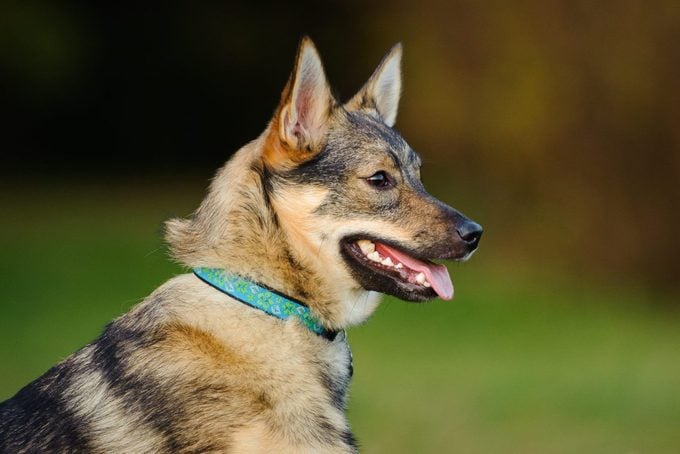
With their perky ears and low-to-the-ground frames, Vallhunds are likely a cross between Scandinavian spitz dogs and Welsh corgis—the result of Viking invasions of Britain in the Middle Ages. They made their bones as herding dogs, shepherding cattle across Sweden, and they retain much of that drive today. “They’re smart, sociable herders with tons of energy,” says Munden. Translation: They need lots of exercise.
Vallhunds tend to be sweet-natured dogs that like to play and are good with kids. They also make good watchdogs, with a deep, intimidating bark that belies their short stature.
FAQs
Can dogs with pointy ears hear better?
No one knows for sure. “We don’t really have the data to back up that idea,” says Ostrander. Still, researchers are open to the possibility that cone-shaped ears could funnel sound in a way that helps hearing acuity. “There might be some truth to it,” says Dreger. “I mean, radar dishes are shaped the way they are for a reason.”
What’s the difference between pointy and cropped ears?
While some dogs are born with pointy ears, cropped ears are the result of a dog’s ears being surgically trimmed. Breeds like the Doberman pinscher, the Great Dane and the schnauzer so frequently have their ears cropped that many people believe that’s just how they look naturally. Not so—they normally have hanging ears, like pointers and beagles.
Animal advocates call ear cropping cruel, and the surgery is banned in many European countries. Breed standards now allow dogs to be shown at dog shows with ears that are natural or cropped. “The decision to crop ears is a personal one that should be discussed and decided by the owner or breeder with an informed veterinarian,” says Dr. Klein.
Additional reporting by Juliana LaBianca.
Why trust us
At Reader’s Digest, we’re committed to producing high-quality content by writers with expertise and experience in their field in consultation with relevant, qualified experts. For this piece on dogs with pointy ears, Cynthia Sanz Carstens tapped her experience researching and writing about pets, and then Caroline Coile, PhD, an award-winning journalist specializing in canine breeds, health and science, gave it a rigorous review to ensure that all information is accurate and offers the best possible advice to readers. We verify all facts and data, back them with credible sourcing and revisit them over time to ensure they remain accurate and up to date. Read more about our team, our contributors and our editorial policies.
Sources:
- Elaine A. Ostrander, PhD, founder of the Dog Genome Project; phone interview, Jan. 29, 2024
- Dayna Dreger, PhD, senior staff scientist at the Dog Genome Project; phone interview, Jan. 29, 2024
- Jerry Klein, DVM, chief veterinary officer of the American Kennel Club; email interview, Jan. 31, 2024
- Brandi Munden, vice president of communications for the American Kennel Club; email interview, Jan. 31, 2024
- American Kennel Club: “Dog Breeds”


